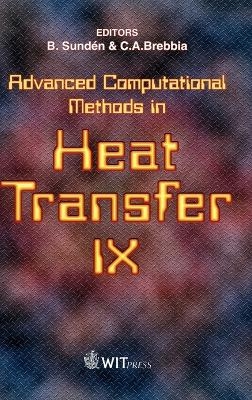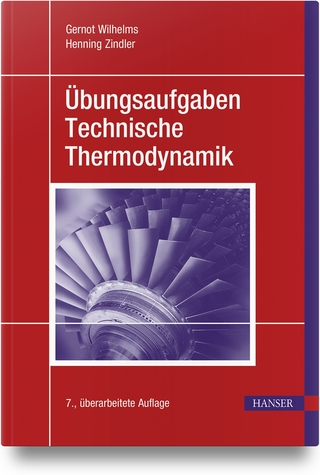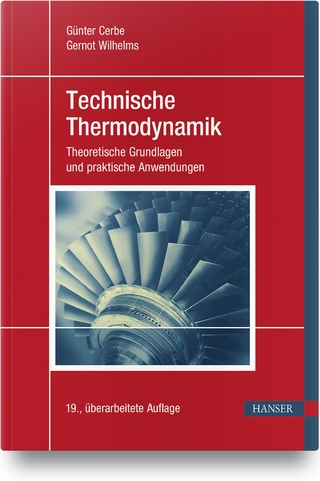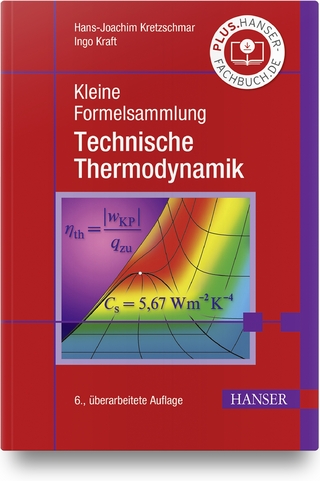
Advanced Computational Methods in Heat Transfer
WIT Press (Verlag)
978-1-84564-176-4 (ISBN)
Heat Transfer topics are commonly of a very complex nature. Often different mechanisms like heat conduction, convection, thermal radiation, and non-linear phenomena, such as temperature-dependent thermophysical properties, and phase changes occur simultaneously. New developments in numerical solution methods of partial differential equations and access to high-speed, efficient and cheap computers have led to dramatic advances during recent years. This book contains the edited versions of the papers presented at the Ninth International Conference on Advanced Computational Methods and Experimental Measurements in Heat Transfer and Mass Transfer. The objective of this conference series is to provide a forum for presentation and discussion of advanced topics, new approaches and application of advanced computational methods and experimental measurements to heat and mass transfer problems. The selected sections show the wide range of applied and fundamental problems in the heat and mass transfer field.Papers encompass a number of topics such as: natural and forced convection; advances in computational methods; heat and mass transfer; modelling and experiments; heat exchangers and equipment; energy systems; micro and nano scale heat and mass transfer.
Section 1: Natural and forced convection A discussion on finite-difference schemes for low Prandtl number Rayleigh-Benard convection; A numerical study of the convective heat transfer between a room and a window covered by a partially open plane blind with a gap at the top; An analytical solution to the Graetz problem with viscous dissipation for non-Newtonian fluids; Heat transfer by unsteady laminar mixed convection in 2-D ventilated enclosures using the vorticity-stream function formulation; Effect of roughness shape on heat transfer and flow friction characteristics of solar air heater with roughened absorber plate; Study of conjugate heat transfer accompanying mixed convection in a vertical tube submitted to a step of entry temperature Section 2: Advances in computational methods An interaction of a sonic injection jet with a supersonic turbulent flow approaching a re-entry vehicle to atmosphere; Simulation of coupled nonlinear electromagnetic heating with the Green element method; Lattice Boltzmann simulation of vortices merging in a two-phase mixing layer; A numerical solution of the NS equations based on the mean value theorem with applications to aerothermodynamics; Solution of the radiative transfer problems in two-dimensional participating cylindrical medium with isotropic scattering using the SKN approximation; Presentation of the hemisphere method; Temperature identification based on pointwise transient measurements Section 3: Heat and mass transfer Heat transfer in 3D water and ice basins; Coupled heat and moisture transport in a building envelope on cast gypsum basis; Spray water cooling heat transfer under oxide scale formation conditions; How to design compact mass transfer packing for maximum efficiency; Autowave regimes of heat and mass transfer in the non-isothermal through-reactors; Experimental studies of heat transfer between crystal, crucible elements, and surrounding media when growing large-size alkali halide ingots with melt feeding; Modelling of heat and mass transfer in water pool type storages for spent nuclear fuel Section 4: Modelling and experiments Experimental study of in-line tube bundle heat transfer in vertical foam flow; Use of graphics software in radiative heat transfer simulation; On heat transfer variation in film flow related with surface cross curvature; Experimental investigation of enhanced heat transfer of self-exciting mode oscillating flow heat pipe with non-uniform profile under laser heating; Investigation of heat transfer in the cup-cast method by experiment, and analytical method; Atwood number effects in buoyancy driven flows; Testing of the vapour chamber used in electronics cooling; Modeling a real backdraft incident fire; Numerical and experimental studies in the development of new clothing materials; Sensitivity analysis of a computer code for modelling confined fires; Conservative averaging as an approximate method for solution of some direct and inverse heat transfer problems Section 5: Heat exchangers and equipment Estimating number of shells and determining the log mean temperature difference correction factor of shell and tube heat exchangers; The re-commissioned thermosyphon reboiler research facility in the Morton Laboratory; Analysis of water condensation and two-phase flow in a channel relevant for plate heat exchangers; Numerical heat transfer modelling of staggered array impinging jets; The re-commissioning of a vent and reflux condensation research facility for vacuum and atmospheric operation; Heat transfer modelling in double pipes for domestic hot water systems; Convective heat transfer investigations at parts of a generator circuit breaker; Simplified 3-D FE model of thermal conditions inside a shoe Section 6: Energy systems Radiative heat transfer in a model gas turbine combustor; Thermo-economics of an irreversible solar driven heat engine; Analysis of a new solar chimney plant design for mountainous regions Section 7: Micro and nano scale heat and mass transfer Sinusoidal regime analysis of heat transfer in microelectronic systems; Viscous dissipation and temperature dependent viscosity effects in simultaneously developing flows in flat microchannels with convective boundary conditions; Experimental study of water evaporation from nanoporous cylinder surface in natural convective airflow
| Erscheint lt. Verlag | 26.6.2006 |
|---|---|
| Reihe/Serie | WIT Transactions on Engineering Sciences ; No. 53 |
| Zusatzinfo | Illustrations |
| Verlagsort | Southampton |
| Sprache | englisch |
| Maße | 155 x 230 mm |
| Themenwelt | Naturwissenschaften ► Physik / Astronomie ► Thermodynamik |
| Technik ► Elektrotechnik / Energietechnik | |
| ISBN-10 | 1-84564-176-0 / 1845641760 |
| ISBN-13 | 978-1-84564-176-4 / 9781845641764 |
| Zustand | Neuware |
| Informationen gemäß Produktsicherheitsverordnung (GPSR) | |
| Haben Sie eine Frage zum Produkt? |
aus dem Bereich


